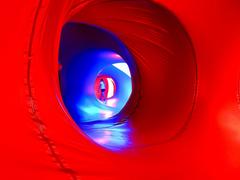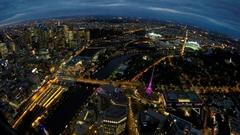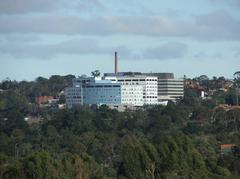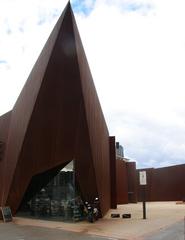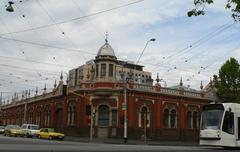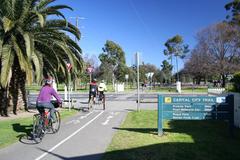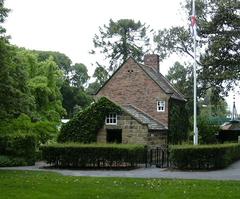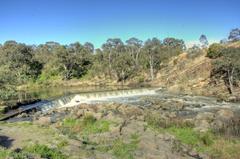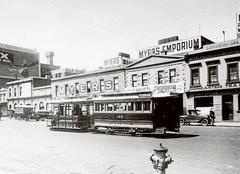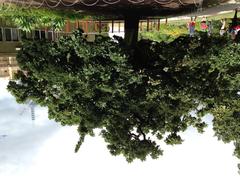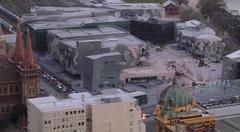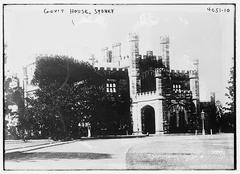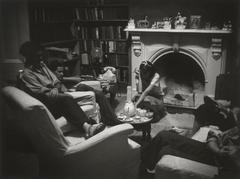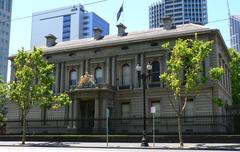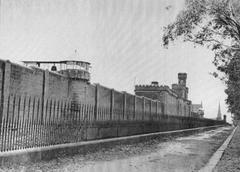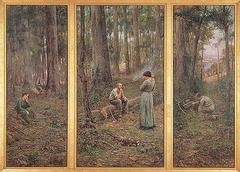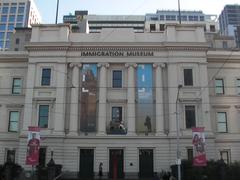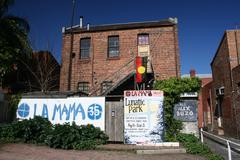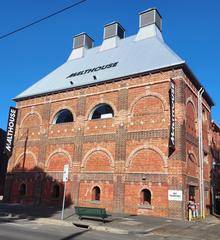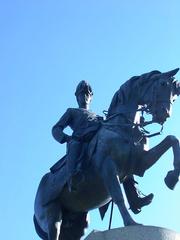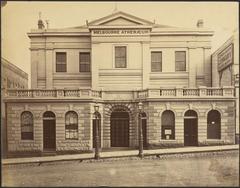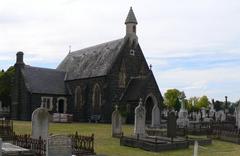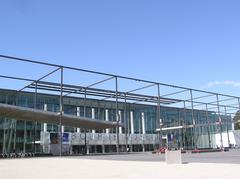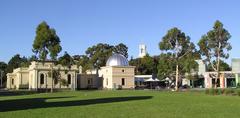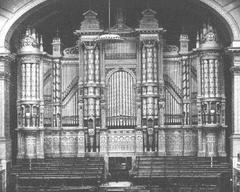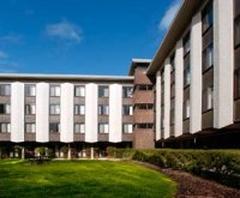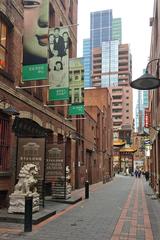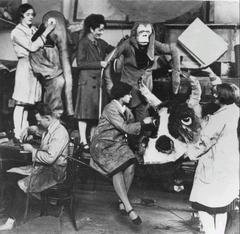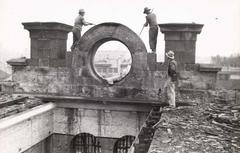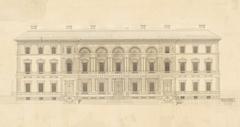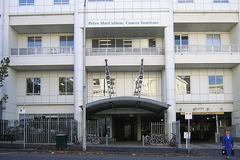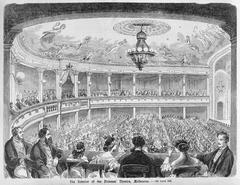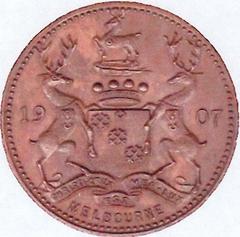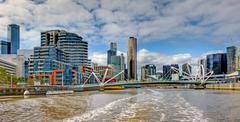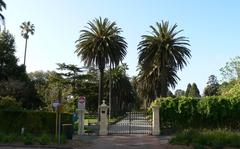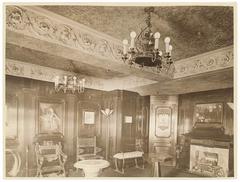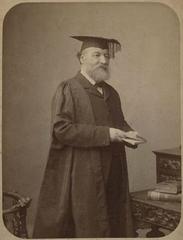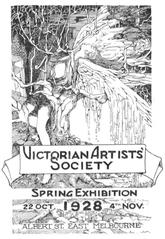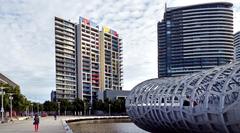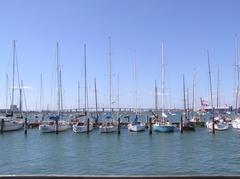Sir Thomas Bent Statue Melbourne: Visiting Hours, Tickets, and Historical Significance
Date: 14/06/2025
Introduction
Located at the prominent intersection of Nepean Highway and Bay Street in Brighton, Melbourne, the Sir Thomas Bent Statue is a striking public monument embodying a complex blend of history, art, and civic commemoration. Erected in 1913 to honor Sir Thomas Bent, former Premier of Victoria, the statue is not only a tribute to a key figure in Victoria’s political landscape but also a milestone in Australian sculpture—crafted by Margaret Baskerville, Victoria’s first major female sculptor (Victorian Heritage Database, Monument Australia).
This guide details the statue’s historical and artistic context, practical visitor information, accessibility, and nearby attractions in Brighton. It also explores the broader cultural and social narratives connected to Sir Thomas Bent, offering a comprehensive resource for both local visitors and history enthusiasts.
Contents
- Early Life and Rise of Sir Thomas Bent
- Political Career and Achievements
- Land Speculation and Controversy
- Commemoration and the Statue’s Origins
- Artistic and Technical Innovations
- Visiting the Sir Thomas Bent Statue
- Location and Access
- Visiting Hours and Entry
- Accessibility
- Guided Tours and Events
- Photography Tips
- Nearby Attractions
- Relocation and Changing Landmark Status
- Social and Historical Significance
- Frequently Asked Questions (FAQs)
- Conclusion
- References
Early Life and Rise of Sir Thomas Bent
Born in 1838 in Penrith, New South Wales, Sir Thomas Bent moved to Melbourne as a child with his family, settling in East Brighton. Leaving school at age 13, Bent worked in the family’s market garden, quickly establishing himself as a successful market gardener and local businessman. His early public service began as Brighton’s first rate collector and a member of the Moorabbin Road Board (Australian Dictionary of Biography). By 33, he was elected Member for Brighton in the Victorian Legislative Assembly, a seat he held for over three decades.
Political Career and Achievements
Bent’s extensive political career featured ten terms as Mayor of Brighton and multiple prominent state government roles, including Minister for Railways, Vice-President of the Board of Land and Works, Speaker of the Legislative Assembly, Treasurer, and ultimately Premier of Victoria (1904–1909) (Wikipedia). As Premier, Bent was instrumental in expanding Victoria’s public infrastructure—championing new railways, tramways, roads, and utilities, and fostering suburban growth, especially in Brighton and its surrounds (Australian Dictionary of Biography).
Land Speculation and Controversy
Bent’s career was not without controversy. His involvement in land speculation and property development often intersected with his political influence, drawing allegations of self-interest and corruption. Government investigations and royal commissions censured Bent for questionable conduct, particularly regarding railway expansions that benefited his own landholdings. Despite these scandals, he was never found to have gained direct financial benefit, but his reputation remains divisive—a reflection of Melbourne’s late 19th-century land booms and political machinations (Victorian Heritage Database, Monument Australia).
Commemoration and the Statue’s Origins
Following Bent’s death in 1909, Brighton Council and local citizens raised funds to commemorate him. Margaret Baskerville was selected to design the statue, making her the first woman in Victoria to receive such a major public commission. The statue was unveiled in 1913 at the intersection of Point Nepean and Brighton Roads, within Bent’s former constituency (Victorian Heritage Database). Baskerville’s commission represented a significant step for female artists in Australia, establishing her as a leading sculptor (National Trust Victoria).
Artistic and Technical Innovations
The statue stands approximately 2.9 meters high—one and a half times life-size—and is constructed from more than 60 individually hand-beaten and welded bronze pieces, using oxygen-acetylene welding, which was innovative for its era. Bent is depicted holding a scroll, as if addressing an audience, his posture and attire symbolizing authority and civic duty. The statue’s deep, rich bronze patina and monumental scale contribute to its commanding presence in Brighton’s urban landscape (Monument Australia).
Visiting the Sir Thomas Bent Statue
Location and Access
- Address: Corner of Nepean Highway and Bay Street, Brighton, VIC 3186, Australia
- Public Transport: A 10-minute walk from Brighton Beach railway station, with several bus routes servicing the area (Public Transport Victoria).
- Parking: Limited street parking and public car parks nearby.
Visiting Hours and Entry
The statue is located outdoors in a landscaped reserve and is accessible to the public 24 hours a day, seven days a week. No tickets or entry fees are required.
Accessibility
The site features paved pathways, benches, and accessible parking spaces, making it wheelchair-friendly and suitable for visitors with mobility requirements.
Guided Tours and Events
While there are no regular guided tours dedicated solely to the statue, local historical societies and the City of Bayside occasionally offer heritage walks and educational programs that include the site. Check the Brighton Historical Society and Bayside City Council websites for updates.
Photography Tips
For the best photographs, visit during early morning or late afternoon when the sunlight enhances the statue’s bronze textures and the surrounding gardens are at their most picturesque.
Nearby Attractions
- Brighton Beach Bathing Boxes: Iconic colorful beach huts less than 2 km away (Visit Victoria).
- Bay Street Precinct: Cafés, restaurants, and boutique shops for refreshments or shopping.
- Brighton Historical Society Museum: Local history exhibits on Bent and Brighton.
- Brighton Beach Pavilion and Foreshore Walks: Ideal for enjoying the coastal scenery.
Relocation and Changing Landmark Status
Originally standing at a more prominent intersection, the statue was relocated in the late 1970s to accommodate road widening. Despite relocation, it remains a significant landmark, sometimes the subject of local pranks, and continues to play a role in civic commemorations. A nearby memorial fountain honors Bent’s second wife, Elizabeth (Victorian Heritage Database).
Social and Historical Significance
The Sir Thomas Bent Statue is recognized on the Victorian Heritage Register for its historical, artistic, and social value. It commemorates the achievements and controversies of Bent’s career and celebrates the pioneering work of Margaret Baskerville. The monument encourages reflection on the complexities of public memory, political ethics, and the evolving role of women in Australian art (National Trust Victoria).
Frequently Asked Questions (FAQs)
Q: What are the visiting hours of the Sir Thomas Bent Statue?
A: The statue is accessible 24/7, year-round.
Q: Is there an entry fee or ticket required?
A: No, visiting the statue is free and does not require a ticket.
Q: Is the site wheelchair accessible?
A: Yes, the statue is accessible via paved pathways and offers nearby accessible parking.
Q: Are guided tours available?
A: Occasionally, as part of local heritage walks or by arrangement with the Brighton Historical Society.
Q: What’s the best time for photography?
A: Early mornings and late afternoons provide optimal natural light.
Q: How do I reach the statue by public transport?
A: The closest station is Brighton Beach railway station, with a 10-minute walk to the statue. Bus routes also serve the area.
Conclusion
The Sir Thomas Bent Statue is a multifaceted symbol of Melbourne’s political, cultural, and artistic heritage. Its prominent location, free access, and historical depth make it a rewarding destination for history buffs, art lovers, and casual visitors alike. The monument’s story—encompassing civic achievement, controversy, and artistic innovation—offers a gateway to understanding the complexities of Victoria’s past and the ongoing evolution of public commemoration.
Plan your visit to explore not only the statue itself but also the vibrant Brighton precinct and its many historical attractions. For event updates, guided tour information, and further heritage exploration, consult local resources or download the Audiala app for curated cultural experiences.
References
- Victorian Heritage Database
- Brighton Historical Society
- Monument Australia
- Australian Dictionary of Biography
- Monument Australia
Explore, reflect, and enjoy your visit to the Sir Thomas Bent Statue—an enduring symbol of Melbourne’s vibrant past and evolving identity.
